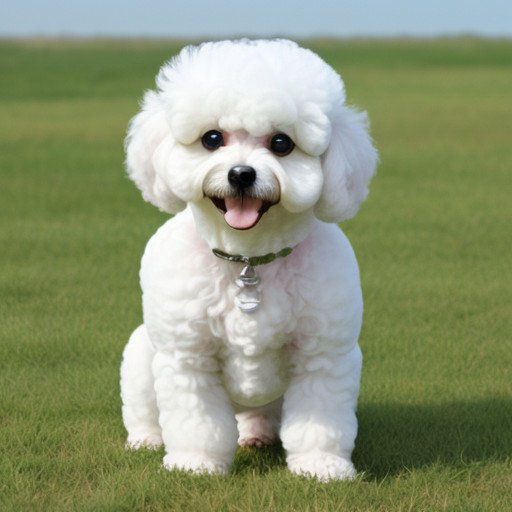**Paw-some Companions: Discovering the Charm of Small to Medium Dog Breeds**
** Introduction **
When it comes to finding the ideal four-legged friend, small to medium breed dogs often prove to be fantastic companions. These breeds strike a pleasant balance between manageability and strong character, making them ideal for a variety of living situations, from cozy apartments to spacious homes. Whether you’re an active adventurer or prefer a more relaxed lifestyle, there’s a small to medium breed that can fit seamlessly into your daily routine.
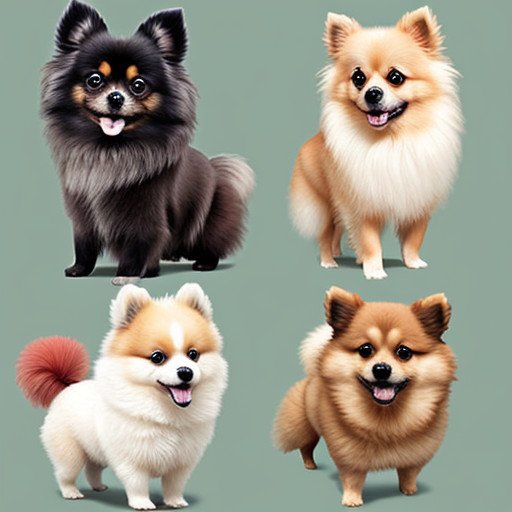
Table of Contents
One of the most attractive aspects of small to medium dog breeds is their adaptability. They are generally easier to handle, require less space, and their exercise needs are often more manageable than larger breeds. This makes them great for families, singles, and seniors alike. Breeds like the Beagle, Cocker Spaniel, and French Bulldog bring their own unique charms and personalities, providing everything from playful energy to loyal companions.
Additionally, these breeds tend to have fewer health issues related to size, making them a practical choice for many potential dog owners. They are perfect for those who want a loving, lively pet without the demands of larger breeds. In the following sections, we’ll explore some of the most favorite small to medium dog breeds, highlighting their distinctive characteristics and what makes them such a wonderful addition to any home.
Characteristics of Small Medium Dog Breeds ;
Small to medium dog breeds are loved for their unique blend of characteristics that makes them versatile and lovable pets. These breeds typically range from around 10 to 50 pounds, striking a perfect balance between being easily manageable and still strong enough to enjoy active play and outdoor adventures.
A distinctive feature of small medium dog breeds is their adaptability. Whether you live in a city apartment or a suburban home, these dogs can thrive in a variety of environments. They don’t require as much space as larger breeds, making them ideal for urban living. Additionally, their exercise needs are generally moderate, meaning that a daily walk and some play time is often enough to keep them happy and healthy.
By nature, small to medium dog breeds are known for their friendly and affectionate natures. Breeds like the Cavalier King Charles Spaniel and the Shih Tzu are especially known for their loving personalities and enjoy being close to their human companions. These dogs often get along well with children and other pets, making them excellent family dogs.
Additionally, their size and temperament often make training easier, as they are generally eager to please and quick to learn. This combination of traits makes small to medium dog breeds a popular choice for a variety of households.
Top 20 Small to Medium Dog Breeds ;
1. Beagle :
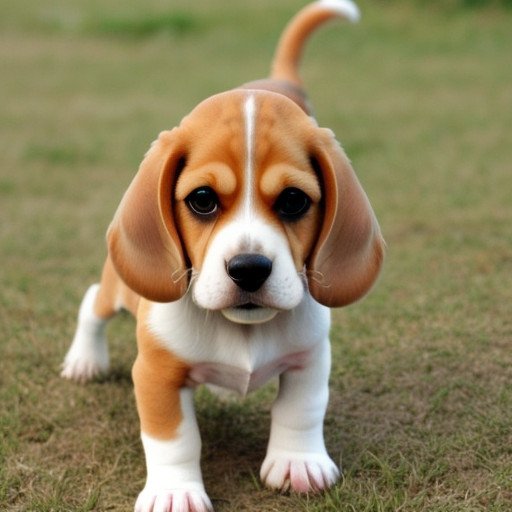
Height
- Male: 14-16 inches (35-41 cm)
- Female: 13-15 inches (33-38 cm)
Weight
- Male: 22-24 pounds (10-11 kg)
- Female: 20-22 pounds (9-10 kg)
Color
- Beagles come in a variety of colors, but the most common are tricolor (black, white, and tan) and lemon (light tan and white). Other color variations include red and white, and chocolate tri.
Temperament and Behavior
- Friendly: Beagles are known for their friendly and sociable nature, making them great family pets.
- Curious: They have a strong sense of curiosity, often leading them to explore their surroundings thoroughly.
- Playful: Beagles are energetic and playful, enjoying various activities, especially those that engage their scenting abilities.
- Stubborn: They can be quite stubborn and may require patient and consistent training.
- Good with Children and Pets: Beagles typically get along well with children and other pets due to their gentle and tolerant nature.
Lifespan
- The average lifespan of a Beagle is 12-15 years.
Description and Unique History
The Beagle is a small to medium-sized dog breed that is part of the hound group. They have a strong build and a short, smooth coat. Their ears are long and floppy, their eyes are large and expressive, and they have a distinctive high-pitched bark, known as the “beagle bay”.
Unique History: The Beagle has a rich history that dates back to Ancient Greece. They were developed primarily in England as scent hounds to hunt small game such as rabbits. The name “beagle” is believed to come from the French word “béguele”, meaning “open throat”, which refers to their loud, howling vocalizations. Beagles were highly favored by English royalty, including Queen Elizabeth I, who owned “pocket beagles” that were small enough to fit in a pocket.
The breed was brought to the United States in the 19th century, where it quickly became popular for both hunting and companionship. Beagles are still used today for hunting and detection work in some areas due to their excellent sense of smell and tracking abilities. They are also a favorite with families and at dog shows, celebrated for their friendly nature and versatility.
2. Cocker Spaniel :
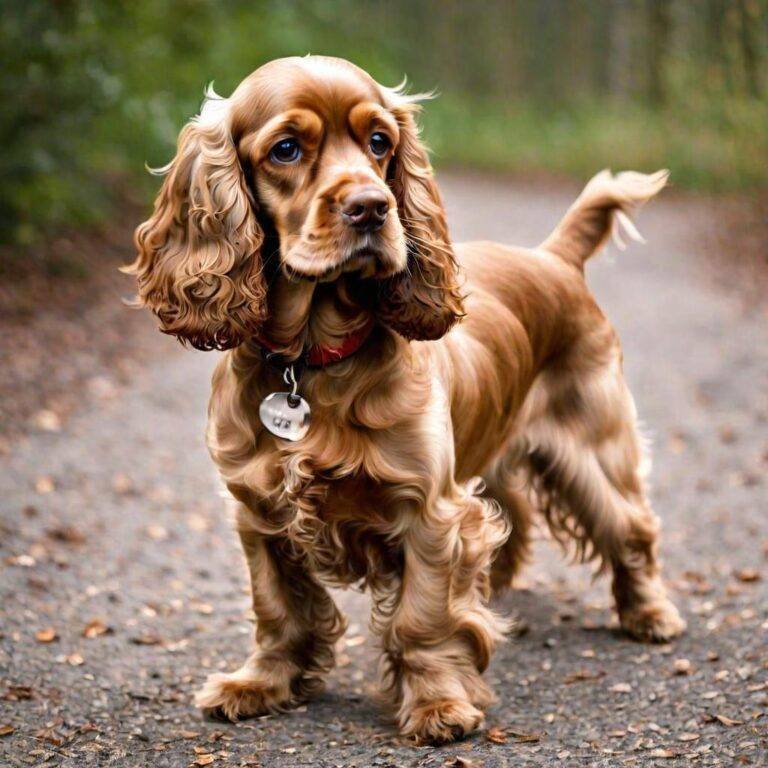
Height
- Male: 15-17 inches (38-43 cm)
- Female: 14-16 inches (36-41 cm)
Weight
- Male: 25-30 pounds (11-14 kg)
- Female: 20-25 pounds (9-11 kg)
Color
- Cocker Spaniels come in a wide variety of colors, including black, liver, red, golden, black and tan, liver and tan, and various parti-color combinations such as black and white or liver and white.
Temperament and Behavior
- Affectionate: Cocker Spaniels are known for their loving and affectionate nature, forming strong bonds with their families.
- Gentle: They are gentle and good with children, making them excellent family pets.
- Playful: Cocker Spaniels have a playful demeanor and enjoy games and activities.
- Friendly: They are generally friendly towards strangers and other animals.
- Sensitive: Cocker Spaniels can be sensitive to their environment and may require positive reinforcement training.
Lifespan
- The average lifespan of a Cocker Spaniel is 12-15 years.
Description and Unique History
The Cocker Spaniel is a medium-sized dog breed that is part of the Sporting group. They have a distinctive, silky coat that requires regular care to keep it free of mats and tangles. Their ears are long and droopy, their eyes are large and expressive, and their expression is sweet, gentle.
Unique History: The Cocker Spaniel has a long history dating back to at least the 14th century, originating in Spain and later developed in England. The breed was initially divided into two types: the “Cocker” for hunting woodcock and the “Springer” for flushing game. Over time, the Cocker Spaniel was further refined and became popular in the United States, leading to the development of the American Cocker Spaniel and the English Cocker Spaniel as separate breeds.
The American Cocker Spaniel was built slightly smaller than its English counterpart, with a more rounded skull and shorter muzzle. Both varieties have been popular in dog shows and as companion animals. The breed gained prominence in the United States in the mid-20th century, particularly through the Disney film “Lady and the Tramp”, which featured a lovable Cocker Spaniel as one of the main characters.
Cocker Spaniels have also been used in a variety of roles beyond companionship, including as therapy dogs and in search and rescue missions due to their keen nose and trainable nature. The combination of their beauty, affectionate nature and versatility makes them a beloved breed around the world.
3. French Bulldog :
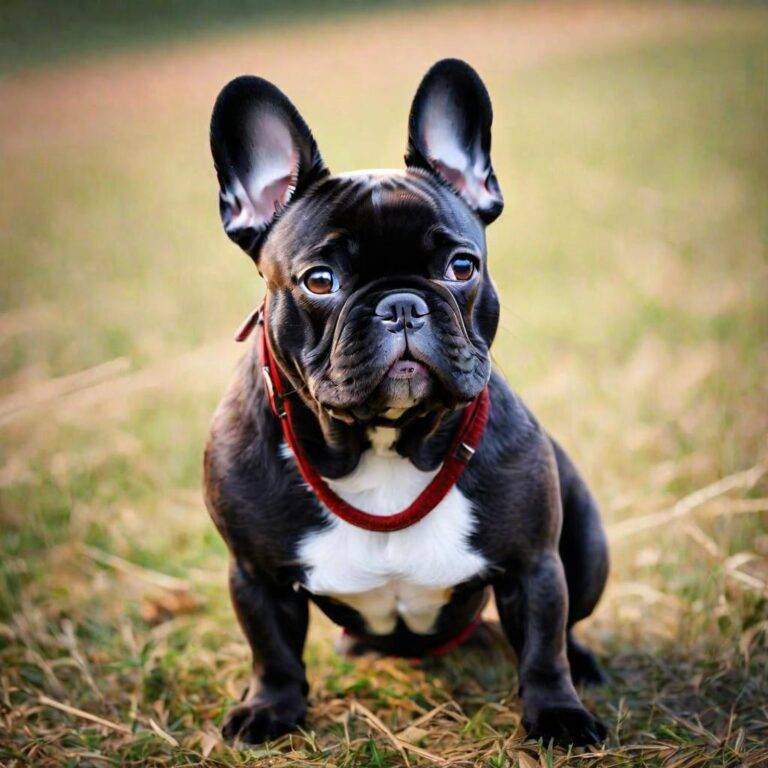
Height
- Male: 11-12 inches (28-31 cm)
- Female: 11-12 inches (28-31 cm)
Weight
- Male: 20-28 pounds (9-13 kg)
- Female: 16-24 pounds (7-11 kg)
Color
- French Bulldogs come in various colors, including fawn, brindle, cream, white, and combinations of these colors. Some also have markings or patterns like pied (white with patches of another color).
Temperament and Behavior
- Affectionate: French Bulldogs are known for their loving and affectionate nature. They form strong bonds with their owners.
- Playful: They enjoy playtime and can be quite entertaining with their antics.
- Adaptable: French Bulldogs adapt well to various living environments, including apartments, due to their moderate exercise needs.
- Friendly: They are generally friendly towards strangers and other pets.
- Alert: Despite their small size, French Bulldogs are alert and make good watchdogs.
- Stubborn: They can be a bit stubborn, which may require patient and consistent training.
Lifespan
- The average lifespan of a French Bulldog is 10-12 years.
Description and Unique History
The French Bulldog is a small, muscular dog with a smooth coat, compact build and a short, thin nose. They have distinctive bat-like ears and a flat, wrinkled face that gives them a unique appearance. His eyes are large and expressive, adding to his charming and often comical appearance.
Unique History: The French Bulldog originated in England in the early 1800s, where they were bred from the toy version of the English Bulldog. These little bulldogs were popular among lace workers in Nottingham who moved to France in search of work during the Industrial Revolution. They brought their miniature bulldogs with them, where the breed was further developed and hybridized with local rats in France, resulting in the distinct breed known today.
The breed quickly gained popularity in France, especially among the Parisian aristocracy and artists. The French Bulldog was affectionately called the “Boulédog Français”. They are known for their charming personality and companionship, making them popular as lap dogs and companions.
The French Bulldog made its way back to England and then to America, where its popularity continued to grow. In 1897, the French Bulldog Club of America was founded, marking the official recognition of the breed. The breed has since become a beloved pet around the world, acclaimed for its affectionate nature, unique appearance, and adaptability to a variety of living situations. Despite their small size, French Bulldogs have big personalities and the ability to bring joy to their families.
4. Cavalier King Charles Spaniel :
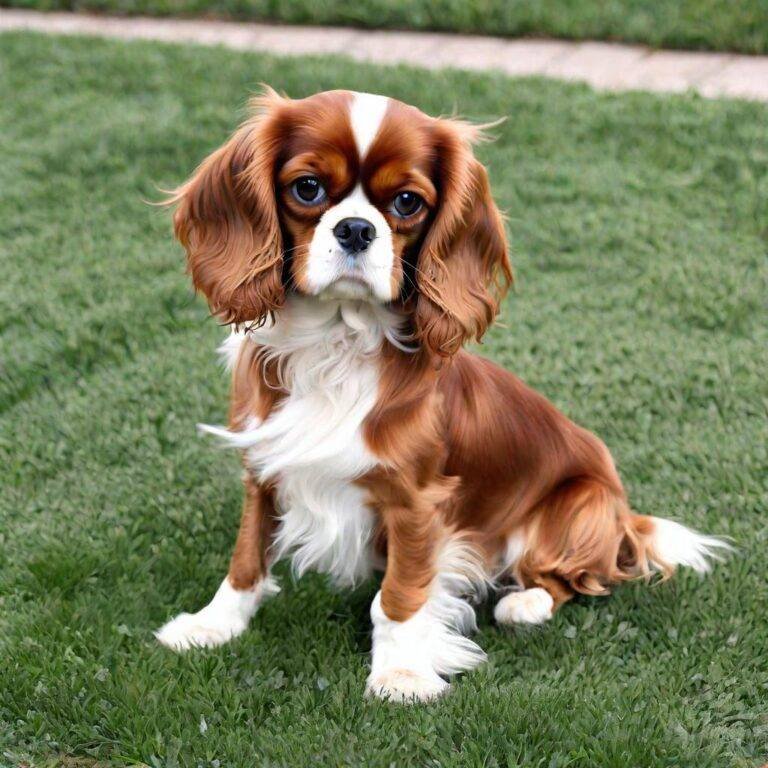
Height
- Male: 12-13 inches (30-33 cm)
- Female: 12-13 inches (30-33 cm)
Weight
- Male: 13-18 pounds (6-8 kg)
- Female: 13-18 pounds (6-8 kg)
Color
- Cavalier King Charles Spaniels come in four recognized colors:
- Blenheim: Rich chestnut markings on a pearly white background.
- Tricolor: Black markings on a white background with tan points above the eyes, on cheeks, inside ears, and underside of tail.
- Ruby: Solid rich red all over.
- Black and Tan: Jet black with rich tan markings over the eyes, on cheeks, inside ears, on chest, legs, and underside of tail.
Temperament and Behavior
- Affectionate: Cavalier King Charles Spaniels are known for their loving and affectionate nature. They thrive on human companionship and are often referred to as “love sponges.”
- Gentle: They have a gentle temperament, making them excellent companions for children and seniors alike.
- Friendly: Cavaliers are friendly towards strangers and other animals, which makes them well-suited for families.
- Playful: Despite their regal appearance, they enjoy playtime and are happiest when with their family.
- Adaptable: They adapt well to various lifestyles, whether in an apartment or a larger home, as long as they receive enough attention and exercise.
- Eager to Please: Cavaliers are eager to please their owners, making them relatively easy to train with positive reinforcement.
Lifespan
- The average lifespan of a Cavalier King Charles Spaniel is 10-14 years.
Description and Unique History
The Cavalier King Charles Spaniel is a small, beautiful toy breed with a silky coat and a fine feathered tail that curls beautifully over its back. They have a slightly flat face with a well-defined stop, giving them a sweet expression. Their ears are long and well feathered, which complements their expressive eyes.
Unique History: The history of the Cavalier King Charles Spaniel dates back to the reign of King Charles II in 17th-century England, after whom they are named. King Charles II was known for his love of these miniature spaniels, and they were often depicted in royal portraits of the time. The popularity of the breed continued into subsequent generations and they remained a favorite among the English nobility.
However, in the early 20th century, efforts were made to recreate the original “old type” of the King Charles Spaniel, which led to the development of the Cavalier King Charles Spaniel as it is known today. The breed was recognized by the American Kennel Club (AKC) in 1996.
Cavaliers are admired for their affectionate nature and ability to form strong bonds with their owners. They excel as therapy dogs and excel in various dog sports due to their intelligence and eagerness to please. Their gentle behavior and beautiful looks make them popular companions around the world.
5. Pembroke Welsh Corgi ;
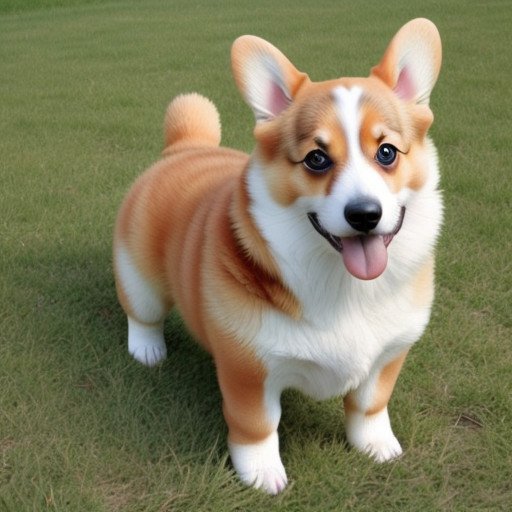
Height
- Male: 10-12 inches (25-30 cm) at the shoulder
- Female: 10-12 inches (25-30 cm) at the shoulder
Weight
- Male: 24-30 pounds (11-14 kg)
- Female: 24-28 pounds (11-13 kg)
Color
- Pembroke Welsh Corgis typically come in several colors, including red, sable, fawn, black and tan, and tri-color (black, tan, and white). They may also have white markings on their chest, legs, and muzzle.
Temperament and Behavior
- Intelligent: Pembroke Welsh Corgis are highly intelligent and eager to please, which makes them trainable and responsive to commands.
- Friendly: They are affectionate and loving towards their families, making them excellent companions.
- Energetic: Despite their short legs, Corgis are surprisingly athletic and enjoy physical activities and playtime.
- Alert: They are alert watchdogs and will alert their owners to anything unusual with their bark.
- Bold: Corgis are confident and bold dogs, often displaying a big-dog attitude in a small-dog body.
- Herding Instincts: They have strong herding instincts and may try to herd people or other pets, especially children.
Lifespan
- The average lifespan of a Pembroke Welsh Corgi is 12-14 years.
Description and Unique History
The Pembroke Welsh Corgi is a small but strong herding dog, a distinctive feature of which is their short legs, long body and fox-like face. They have erect ears, expressive eyes and a hooked tail (although some are born with a natural bobtail). Their double coat is weather resistant, consisting of a thick undercoat and a thick outer coat.
Unique History: Pembroke Welsh Corgis have a rich history dating back to 10th century Wales, where they were developed as herding dogs for cattle. The name “Corgi” is derived from the Welsh words “cor” (dwarf) and “gi” (dog), reflecting their stature and purpose. They were originally used to drive cattle by nipping at their heels, a task made easier by their short stature, which allowed them to avoid kicks.
Legend has it that Pembroke Welsh Corgis were a gift from woodland fairies and that the marks on their coats were left by fairy saddles and harnesses. In more recent history, Queen Elizabeth II of England owned over 30 Pembroke Welsh Corgis during her reign, further increasing their popularity and royal association.
Today, Pembroke Welsh Corgis are beloved for their intelligence, loyalty, and playful nature. They excel in a variety of dog sports and activities and make wonderful companions for families and individuals. Their unique appearance and rich history continues to fascinate dog lovers around the world.
6. Shih Tzu ;
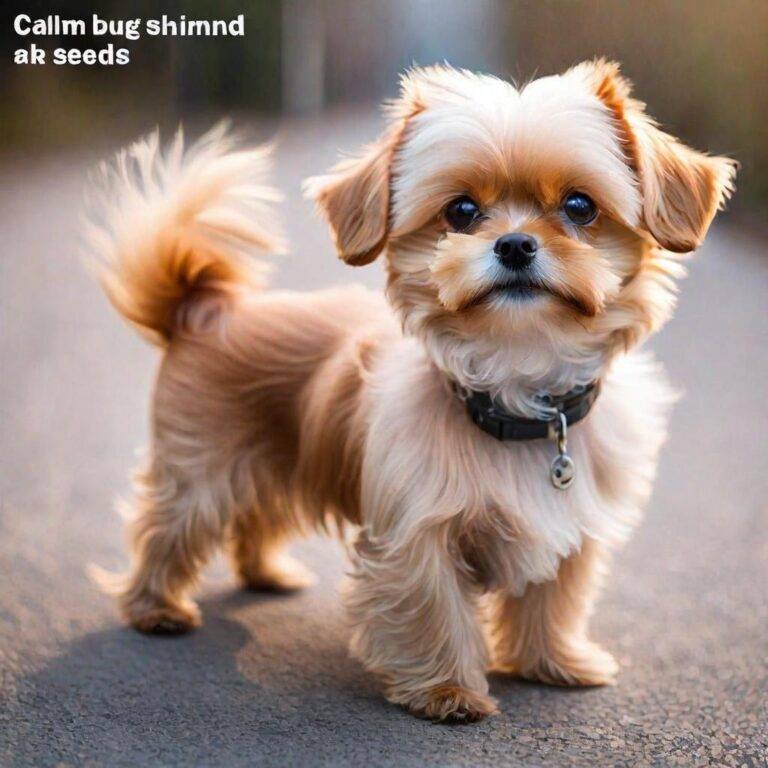
Height
- Male: 8-11 inches (20-28 cm)
- Female: 8-11 inches (20-28 cm)
Weight
- Male: 9-16 pounds (4-7 kg)
- Female: 9-16 pounds (4-7 kg)
Color
- Shih Tzus come in various colors and combinations, including black, white, gold, brindle, and various shades of brown. They can also have a combination of these colors, often with white markings.
Temperament and Behavior
- Affectionate: Shih Tzus are known for their affectionate nature and love being around their human companions.
- Playful: They enjoy playtime and can be surprisingly lively and energetic despite their small size.
- Friendly: Shih Tzus are generally friendly towards strangers and other pets, making them good family dogs.
- Loyal: They form strong bonds with their owners and are known for their loyalty.
- Independent: Shih Tzus have a somewhat independent streak and may exhibit stubbornness, but they respond well to positive reinforcement training.
- Alert: They make good watchdogs and will alert their owners to anything unusual with their bark.
Lifespan
- The average lifespan of a Shih Tzu is 10-16 years.
Description and Unique History
The Shih Tzu is a small toy breed with a uniquely beautiful and regal appearance. They have a long flowing double coat that reaches the ground, a short muzzle, large dark eyes and a tail that curls over their back. Their ears are set low and covered with fur, which adds to their adorable appearance.
Unique History: The Shih Tzu breed has ancient origins, with a history dating back to Tibet and China, where they were bred as companion dogs for Chinese royalty and nobility. They were highly prized and often given as gifts among royalty and honored visitors. The name “Shih Tzu” means “lion dog” in Chinese, reflecting their lion-like appearance and royal status.
During the Ming dynasty (1368–1644), Shih Tzus were further refined and bred in the Forbidden City of Peking (Beijing), where they were pampered and respected as sacred dogs. They were not widely known outside China until the early 20th century, when they were brought to England and eventually the United States.
Shih Tzus quickly gained popularity for their charming personalities, beauty, and suitability as companion animals. They have remained popular ever since, known for their affectionate nature, adaptability to different living environments, and ability to bring happiness to their families. Today, they are a favorite breed among dog lovers around the world, loved for their regal looks and loving nature.
7. Pug :

Height
- Male: 10-11 inches (25-28 cm)
- Female: 10-11 inches (25-28 cm)
Weight
- Male: 14-18 pounds (6-8 kg)
- Female: 14-18 pounds (6-8 kg)
Color
- Pugs come in several colors, including fawn (light yellowish tan), apricot fawn, silver fawn, and black. They often have a black mask on their muzzle and ears.
Temperament and Behavior
- Affectionate: Pugs are known for their loving and affectionate nature. They enjoy being close to their owners and thrive on companionship.
- Playful: They have a playful demeanor and enjoy games and interactive playtime.
- Friendly: Pugs are generally friendly towards strangers and get along well with children and other pets.
- Adaptable: They adapt well to various living environments, including apartments, due to their moderate exercise needs.
- Loyal: Pugs are loyal to their families and form strong bonds with their owners.
- Curious: They have a curious nature and enjoy exploring their surroundings.
Lifespan
- The average lifespan of a Pug is 12-15 years.
Description and Unique History
The Pug is a small breed with a distinctive square-shaped body, a compact build, and a small, wrinkled face. They have a smooth, shiny coat and a curled tail that rests tightly on their hip. Their eyes are large and round, giving them an attractive and expressive look. Pugs are known for their unique appearance and charming personality.
Unique History: The history of the Pug dates back 2,000 years to ancient China, where they were bred as companion dogs to Chinese emperors. Pugs were highly prized and lived in luxury, often receiving special treatment and guards to protect them. They were considered symbols of prosperity and were associated with the ruling classes.
The Pug was later brought to Europe by Dutch traders in the 16th century, where they became increasingly popular among the European elite, including members of the Dutch royal family. They were favored as companion dogs and became favorite lap dogs among the aristocracy.
In the 19th century, Pugs gained popularity in England and eventually the United States. They were recognized by the American Kennel Club (AKC) in 1885. Today, Pugs are beloved for their affectionate and friendly nature. They are known for their playful antics and ability to bring happiness to their families. The Pug remains a popular breed around the world, admired for their charming personality and unique appearance.
8. Miniature Schnauzer :
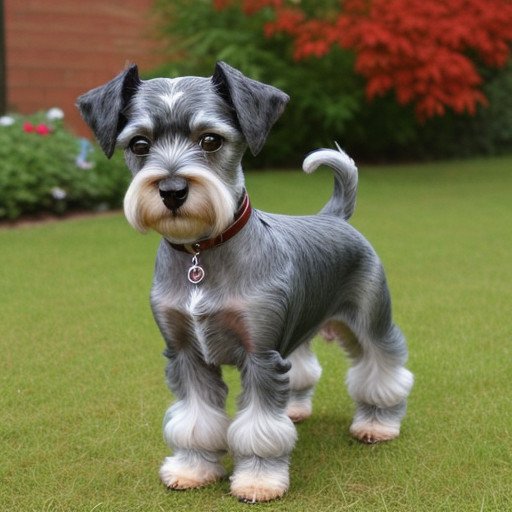
Height
- Male: 12-14 inches (30-36 cm)
- Female: 11-13 inches (28-33 cm)
Weight
- Male: 11-18 pounds (5-8 kg)
- Female: 11-15 pounds (5-7 kg)
Color
- Miniature Schnauzers come in three main colors recognized by the AKC: salt and pepper, black and silver, and solid black. They have a double coat with a wiry outer coat and a soft undercoat.
Temperament and Behavior
- Intelligent: Miniature Schnauzers are highly intelligent and eager to please, making them trainable and responsive to commands.
- Alert: They are excellent watchdogs and will alert their owners to anything unusual with their loud, distinctive bark.
- Friendly: Schnauzers are generally friendly towards strangers and get along well with children and other pets when properly socialized.
- Energetic: They have moderate to high energy levels and enjoy regular exercise and activities.
- Loyal: Miniature Schnauzers are loyal to their families and form strong bonds with their owners.
- Bold: They have a bold and confident personality, often displaying a terrier-like spirit.
Lifespan
- The average lifespan of a Miniature Schnauzer is 12-15 years.
Description and Unique History
The Miniature Schnauzer is a small and sturdy terrier-like dog with a distinctive beard and bushy eyebrows that give them a dignified and expressive appearance. They have an oblong-shaped head, straight back, and a docked tail (although there may be natural bobtails). Their ears are set high and are generally cropped to stand upright.
Unique History: The Miniature Schnauzer originated in Germany in the late 19th century. These were developed by crossing the Standard Schnauzer with smaller breeds such as the Affenpinscher and Miniature Poodle to create a smaller size suitable for hunting small animals and working as companion dogs.
Miniature Schnauzers quickly gained popularity for their versatility, intelligence, and ability to work as ratters and watchdogs on farms and in homes. They were recognized by the AKC in 1926 and have since become popular throughout the world as both companions and competitive show dogs.
During World War I and World War II, Miniature Schnauzers were used by the military as messenger dogs and in search and rescue missions due to their intelligence and trainability. Today he is appreciated for his affectionate nature, intelligence and lively personality. Miniature Schnauzers make excellent family pets and companions, known for their loyalty and devotion to their owners.
9. Boston Terrier :
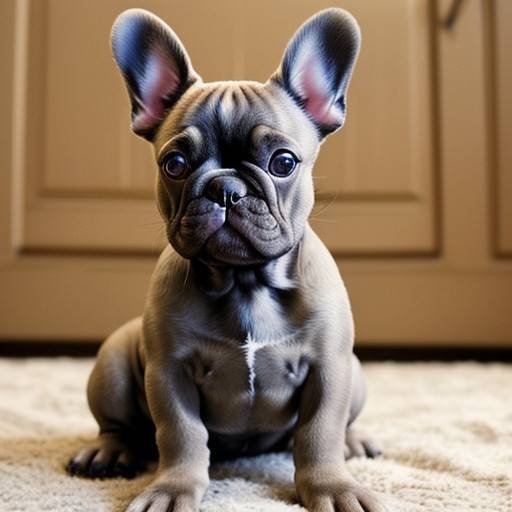
Height
- Male: 15-17 inches (38-43 cm)
- Female: 15-17 inches (38-43 cm)
Weight
- Male: 12-25 pounds (5-11 kg)
- Female: 10-20 pounds (4.5-9 kg)
Color
- Boston Terriers typically have a black and white coat or a brindle pattern (a mix of black and brown). They may also have markings in white, such as a white chest, muzzle, and blaze on the forehead.
Temperament and Behavior
- Friendly: Boston Terriers are known for their friendly and sociable nature. They are affectionate towards their families and enjoy being around people.
- Intelligent: They are intelligent and eager to please, which makes them relatively easy to train.
- Playful: Boston Terriers have a playful and lively personality. They enjoy games and activities with their owners.
- Alert: They make excellent watchdogs and will bark to alert their owners to any unusual activity.
- Adaptable: Boston Terriers adapt well to various living environments, including apartments, due to their moderate exercise needs.
- Affectionate: They form strong bonds with their families and are known for their loyalty and devotion.
Lifespan
- The average lifespan of a Boston Terrier is 11-13 years.
Description and Unique History
The Boston Terrier is a small and muscular dog with a square-shaped head and a short, smooth coat. They have a distinctive “tuxedo” appearance, with their white chest and muzzle contrasting with the darker coat. Their ears are erect and their eyes are large and expressive, giving them a charming and alert expression.
Unique History: The history of the Boston Terrier can be traced to the late 19th century in Boston, Massachusetts, where they were developed by crossing Bulldogs with white English Terriers (now extinct). Originally bred for pit fighting, Boston Terriers were later refined to become companion dogs and were one of the first American breeds recognized by the American Kennel Club (AKC) in 1893.
Boston Terriers quickly gained popularity due to their friendly nature, intelligence, and suitability as indoor pets. He was nicknamed the “American Gentleman” because of his dignified appearance and gentle nature. The breed became popular among families and city dwellers, appreciated for its compact size, lively personality and adaptability to different living situations.
Today, Boston Terriers are appreciated as loving companions and loyal family pets. They are known for their affectionate nature, playful spirit, and unique appearance, which makes them stand out in the world of dog breeds.
10. Bichon Frise :
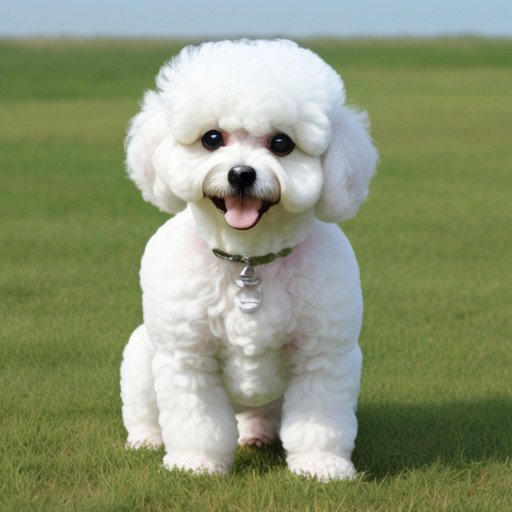
Height
- Male: 9.5-11.5 inches (24-29 cm)
- Female: 9.5-11.5 inches (24-29 cm)
Weight
- Male: 12-18 pounds (5.4-8.2 kg)
- Female: 10-16 pounds (4.5-7.3 kg)
Color
- Bichon Frises are typically white, but they can also come in shades of cream, apricot, or gray. Their coats are fluffy and curly, often resembling a powder puff.
Temperament and Behavior
- Cheerful: Bichon Frises are known for their cheerful and playful personality. They have a lively demeanor and enjoy interacting with their families.
- Affectionate: They are affectionate and love being around people. Bichons thrive on companionship and are often referred to as “velcro dogs” because they like to stick close to their owners.
- Friendly: Bichons are generally friendly towards strangers and get along well with children and other pets when properly socialized.
- Intelligent: They are intelligent and eager to please, making them trainable with positive reinforcement.
- Energetic: Despite their small size, Bichon Frises have moderate energy levels and enjoy regular exercise and playtime.
- Alert: They make good watchdogs and will bark to alert their owners to approaching strangers.
Lifespan
- The average lifespan of a Bichon Frise is 12-15 years.
Description and Unique History
The Bichon Frize is a small and sturdy dog with a characteristically fluffy and curly coat. They have a round head, expressive dark eyes and a feathered tail that curls over their back. Their ears are open and covered with hair, making them look attractive.
Unique History: The history of the Bichon Frize can be traced to the Mediterranean region, where they were developed from the ancient Barbet Water Spaniel. During the Renaissance they became popular among European aristocrats, often being depicted in portraits alongside their aristocratic owners. Bichons were loved as companion dogs and were known for their charming personalities and beauty.
During the 16th century, Italian sailors brought Bichons to the Canary Islands, where they flourished and further evolved into what we recognize today as the Bichon Frize. They gained popularity in France during the reign of Francis I and later became a favorite among French royalty, including King Henry III.
The Bichon Frize almost faced extinction during the French Revolution, but was revived and became popular once again in the 20th century. They were recognized by the AKC in 1972 and have since become beloved pets and companions around the world.
Today, Bichon Frize are admired for their affectionate nature, intelligence, and playful behavior. They are excellent as therapy dogs and companions for families and individuals, known for their joyful approach to life and their ability to bring happiness wherever they go.
11. West Highland White Terrier (Westie) :
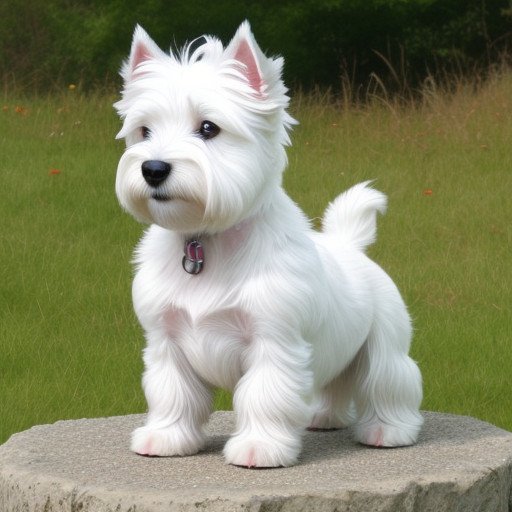
Height
- Male: 10-11 inches (25-28 cm)
- Female: 9-10 inches (23-25 cm)
Weight
- Male: 15-22 pounds (7-10 kg)
- Female: 13-16 pounds (6-7 kg)
Color
- West Highland White Terriers are always white in color, as indicated by their name. Their coat is double-layered with a soft undercoat and a harsher outer coat.
Temperament and Behavior
- Confident: Westies are confident and spirited dogs with a bold and independent personality.
- Friendly: They are generally friendly towards people and enjoy being part of the family.
- Alert: Westies make excellent watchdogs and will bark to alert their owners to any perceived threats.
- Curious: They have a curious nature and enjoy exploring their surroundings.
- Intelligent: West Highland White Terriers are intelligent and quick learners, although they can also be a bit stubborn.
- Playful: They have a playful and lively demeanor and enjoy interactive playtime with their owners.
Lifespan
- The average lifespan of a West Highland White Terrier is 12-16 years.
Description and Unique History
The West Highland White Terrier, often affectionately called the Westie, is a small and sturdy terrier with a distinctive white coat. They have a compact body, a deep chest and a flat back. Their head is proportional to their body, their expression is intense and their ears are erect. Westies have a tail that is traditionally of medium length.
Unique History: The history of the West Highland White Terrier dates back to 19th century Scotland, where they were bred to hunt small animals such as rats, foxes, and badgers. They were developed from the same lineage as other Scottish terriers and were prized for their ability to work over rugged terrain and in harsh weather conditions.
The breed’s white coat was selectively bred to distinguish them from other terriers and to make them more visible when hunting. They were originally known as Poltalloch Terriers, after the estate of Colonel Malcolm of Poltalloch, who was instrumental in promoting the breed.
West Highland White Terriers gained popularity outside Scotland in the late 19th and early 20th centuries. They were recognized by the AKC in 1908 and have since become popular companion dogs and show dogs throughout the world.
Today, Westies are admired for their spirited personalities, loyalty to their families, and their distinctive white coats. They are versatile dogs that excel as companions in both city and country situations. Their playful nature and charming looks make them a favorite among dog lovers around the world.
12. Pomeranian :
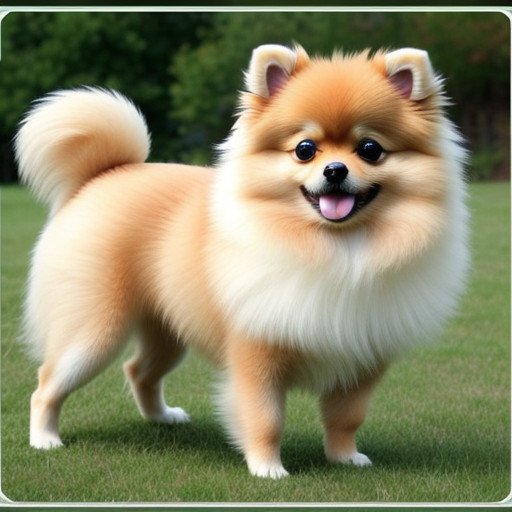
Height
- Male: 8-11 inches (20-28 cm)
- Female: 8-11 inches (20-28 cm)
Weight
- Male: 3-7 pounds (1.4-3.2 kg)
- Female: 3-7 pounds (1.4-3.2 kg)
Color
- Pomeranians come in a wide variety of colors, including black, white, cream, orange, red, sable, blue, brown, and any combination of these colors. They can also have parti-color (white with patches of other colors) and merle patterns.
Temperament and Behavior
- Energetic: Pomeranians are lively and energetic dogs despite their small size. They enjoy playtime and activities.
- Intelligent: They are intelligent and eager to learn, although they can be independent-minded.
- Bold: Pomeranians have a bold and confident personality, often displaying a fearless attitude.
- Loyal: They are loyal to their families and can be protective of their owners.
- Social: Pomeranians are social dogs and enjoy being part of the family. They can be friendly towards strangers but may be reserved initially.
- Alert: They make good watchdogs and will bark to alert their owners to any perceived threats.
Lifespan
- The average lifespan of a Pomeranian is 12-16 years.
Description and Unique History
The Pomeranian is a small toy breed known for its soft double coat and fox-like face. They have a compact body, short back and a curled tail that rests on their back. Their ears are small and erect, and their eyes are deep and expressive.
Unique History: Pomeranians trace their origins to the Pomerania region of Germany and Poland, where they evolved from larger Spitz-type dogs. They were originally much larger than the Pomeranians we know today, weighing around 30 pounds or more. Queen Victoria of England played a key role in shortening the breed, bringing them to their current size and popularizing them among the European elite during the 19th century.
Pomeranians became a favorite among royalty and aristocrats, including Queen Victoria herself, who owned several dogs and even exhibited them in dog shows. Their popularity continued to grow, especially in England and the United States, where they were recognized by the AKC in 1900.
Today, Pomeranians are bred as companion dogs and are known for their lively and friendly personalities. They are versatile pets, thriving in both city apartments and rural homes. Their distinctive appearance and playful behavior make them a popular choice among dog lovers around the world.
13. Dachshund :
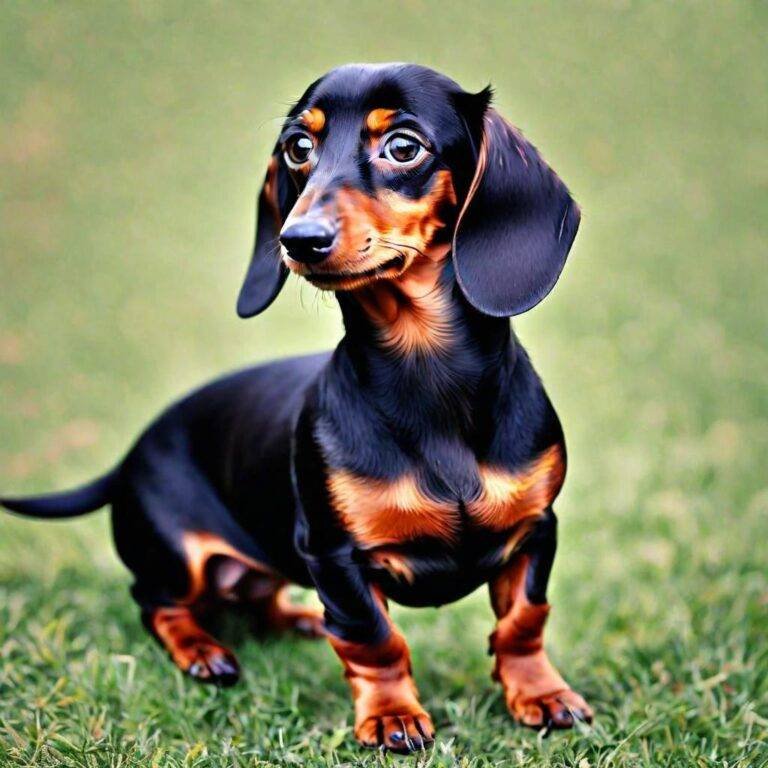
Height
- Standard Size Male: 8-9 inches (20-23 cm)
- Standard Size Female: 8-9 inches (20-23 cm)
- Miniature Size Male and Female: Generally under 8 inches (20 cm)
Weight
- Standard Size Male: 16-32 pounds (7-14.5 kg)
- Standard Size Female: 16-32 pounds (7-14.5 kg)
- Miniature Size Male and Female: Typically 11 pounds (5 kg) or less
Color
- Dachshunds come in a variety of colors and patterns including solid colors (such as red, black, chocolate, or cream), dapple (lighter patches on a darker base), piebald (white with patches of another color), and brindle.
Temperament and Behavior
- Clever and Curious: Dachshunds are intelligent dogs with a strong sense of curiosity. They enjoy exploring their surroundings and can be quite adventurous.
- Courageous: Despite their small size, Dachshunds are courageous and bold. They were originally bred for hunting small game, such as badgers, and have a fearless demeanor.
- Loyal: They form strong bonds with their families and are known for their loyalty and devotion.
- Stubborn: Dachshunds can be stubborn at times, which can make training a challenge. They respond best to consistent and patient training methods.
- Playful: Dachshunds have a playful and lively personality. They enjoy playtime and activities with their families.
- Protective: They make excellent watchdogs and will alert their owners to anything unusual with their bark.
Lifespan
- The average lifespan of a Dachshund is 12-16 years, although some can live even longer with proper care.
Description and Unique History
Dachshunds, also called “wiener dogs” or “sausage dogs”, are known for their long bodies and short legs. They have a deep chest, long snout and long ears that hang down. Dachshunds come in three coat varieties: smooth (short hair), long hair, and wire hair. Each variety has its own care requirements.
Unique History: The Dachshund originated several centuries ago in Germany, where they were bred to hunt badgers and other burrowing animals. The name “Dachshund” translates to “badger dog” in German, reflecting their original purpose. Their long bodies and short legs allowed them to burrow into burrows and dig up prey.
Dachshunds rapidly gained popularity outside Germany during the 19th century, especially in England and the United States. They became beloved as companion dogs, show dogs, and family pets. His unique appearance and feisty personality have made him a favorite among dog lovers.
During World War I and World War II, Dachshunds faced some stigma in the United States and other countries because of their German origins. Despite this, their popularity continued and they were recognized by the AKC in the early 20th century.
Today, Dachshunds are admired for their playful nature, loyalty to their families, and their distinctive appearance. They excel in various dog sports and activities and remain a beloved breed around the world.
14. Shetland Sheepdog :
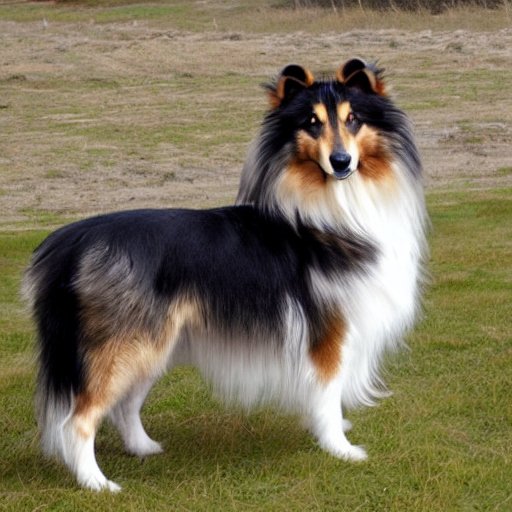
Height
- Male: 14-16 inches (36-41 cm)
- Female: 13-15 inches (33-38 cm)
Weight
- Male: 20-30 pounds (9-14 kg)
- Female: 18-25 pounds (8-11 kg)
Color
- Shetland Sheepdogs come in various colors, including sable (ranging from golden to mahogany), tricolor (black, white, and tan), blue merle (gray with black patches), and bi-black (black and white).
Temperament and Behavior
- Intelligent: Shetland Sheepdogs are highly intelligent and trainable. They excel in obedience and agility activities.
- Energetic: They have moderate to high energy levels and enjoy regular exercise and mental stimulation.
- Affectionate: Shelties are affectionate towards their families and enjoy being part of household activities.
- Alert: They make excellent watchdogs and will bark to alert their owners to any perceived threats.
- Friendly: Shetland Sheepdogs are generally friendly towards strangers and get along well with children and other pets when properly socialized.
- Responsive: They are responsive to their owner’s commands and enjoy learning new tricks and tasks.
Lifespan
- The average lifespan of a Shetland Sheepdog is 12-14 years.
Description and Unique History
The Shetland Sheepdog, often called “Sheltie”, is a small to medium-sized herding dog with a long and flowing double coat. They have a wedge-shaped head, expressive almond-shaped eyes and small ears that usually stand erect. Their tail is long and feathered, often low or slightly curved.
Unique History: The Shetland Sheepdog originated in the Shetland Islands of Scotland, where they were bred to herd and guard sheep. They are descendants of Collies brought to the islands by the Vikings, who were bred with smaller local dogs. Their size and agility made them suitable for herding and working in the rough terrain and harsh climate of the islands.
The Shetland Sheepdog gained popularity in England in the late 19th century and later in the United States, where they were recognized by the AKC in 1911. They were initially known as “Shetland Collies”, but were later renamed “Shetland Sheepdogs” to distinguish them. Rough collies.
Today, Shetland Sheepdogs are beloved for their intelligence, agility, and gentle temperament. They are versatile dogs that excel not only as herding dogs but also as companions, therapy dogs, and competitive show dogs. Shelties are known for their loyalty to their families and desire to please, making them wonderful additions to families looking for an active and devoted canine companion.
15. Italian Greyhound :
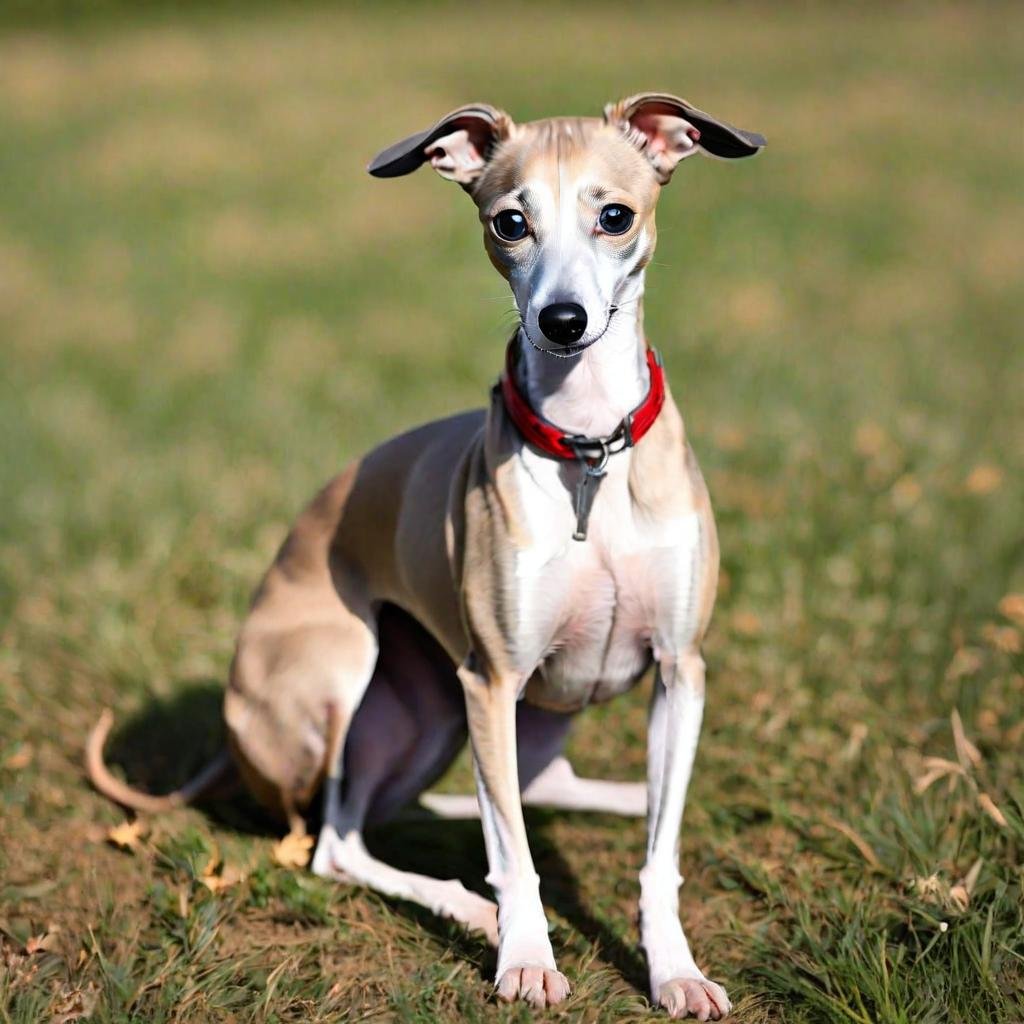
Height
- Male: 13-15 inches (33-38 cm)
- Female: 12-14 inches (30-36 cm)
Weight
- Male: 7-14 pounds (3-6 kg)
- Female: 7-14 pounds (3-6 kg)
Color
- Italian Greyhounds come in various colors and color combinations, including shades of fawn, red, blue, black, cream, and white. They can have markings or patterns such as brindle or spotted.
Temperament and Behavior
- Affectionate: Italian Greyhounds are affectionate and bond closely with their families. They enjoy being near their owners and thrive on companionship.
- Gentle: They have a gentle and sensitive nature, often preferring calm and quiet environments.
- Playful: Despite their elegant appearance, Italian Greyhounds are playful and enjoy running and playing games, especially with toys.
- Alert: They are alert and may be reserved or wary around strangers. They make good watchdogs due to their tendency to bark at unfamiliar sounds.
- Intelligent: Italian Greyhounds are intelligent and quick learners, although they can also be independent-minded.
- Sensitive: They are sensitive to cold temperatures and may need extra warmth during cooler weather.
Lifespan
- The average lifespan of an Italian Greyhound is 12-15 years.
Description and Unique History
The Italian Greyhound is a small and graceful sighthound known for its slim build and graceful gait. They have a long, narrow head, slightly arched neck, deep chest, and long legs. The Italian Greyhound has a short, smooth coat that requires minimal grooming.
Unique History: The Italian Greyhound has a long and illustrious history dating back 2,000 years to ancient Egypt and Rome. They were favorites of the elite class and featured in ancient artworks including frescoes and sculptures. Italian Greyhounds were bred as companion dogs and were often found among royalty and aristocracy.
During the Renaissance, the Italian Greyhound gained popularity among the European elite, especially in Italy, where they were admired for their grace and beauty. They were also prized for their hunting ability, as they were used to hunt small game such as rabbits.
The Italian Greyhound was brought to England in the 17th century and later to the United States, where they continued to be valued as elegant and affectionate companions. They were recognized by the AKC in 1886 and have since become beloved for their gentle temperament and unique appearance.
Today, Italian Greyhounds are bred as beloved pets and companions. They are known for their loyalty to their families and their ability to bring beauty and grace to any home. Italian Greyhounds thrive in homes where they receive plenty of love and attention, making them ideal companions for individuals and families.
16. Border Terrier :
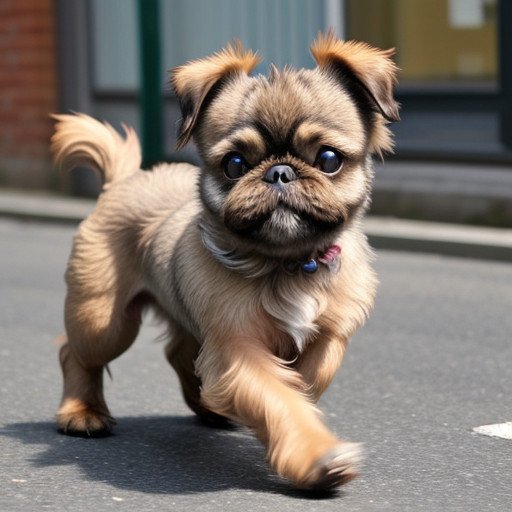
Height
- Male: 10-11 inches (25-28 cm)
- Female: 10-11 inches (25-28 cm)
Weight
- Male: 13-15.5 pounds (6-7 kg)
- Female: 11.5-14 pounds (5-6.5 kg)
Color
- Border Terriers typically have a dense, wiry coat that comes in various colors, including red, grizzle and tan, blue and tan, and wheaten. They may also have a small amount of white on their chest.
Temperament and Behavior
- Affectionate: Border Terriers are affectionate and thrive on companionship with their families. They are known to be good with children and other pets.
- Active: They have a moderate activity level and enjoy regular exercise, including walks and playtime.
- Alert: Border Terriers are alert and make excellent watchdogs. They will bark to alert their owners to any potential threats or visitors.
- Independent: They have a strong sense of independence and may show some stubbornness, which can make training challenging.
- Friendly: They are generally friendly towards strangers, although they may be reserved initially.
- Curious: Border Terriers have a curious nature and enjoy exploring their surroundings.
Lifespan
- The average lifespan of a Border Terrier is 12-15 years.
Description and Unique History
Border terriers are small, sturdy dogs with a distinctive beaver-like head and a dense, rare coat. They have a broad skull, short snout and deep, expressive eyes. Their ears are small and folded, and their tail is moderately short and stands straight.
Unique History: Border Terriers originated in the border region between England and Scotland, where they were developed to hunt foxes and other small animals. They were bred for their working ability, stamina and versatility, making them valuable to farmers and hunters in the rugged terrain of the Scottish Borders.
Border Terriers gained recognition as a distinct breed in the mid-19th century and became popular among farmers and sportsmen. They were rewarded for their ability to work independently and their determination in the field. Their fibrous coat provided protection from harsh weather and dense bushes.
In 1920, the Border Terrier was officially recognized by the Kennel Club in England and later by the American Kennel Club (AKC) in 1930. They have since become valued around the world as both working dogs and beloved companions.
Today, Border Terriers are admired for their friendly and affectionate nature as well as their adaptability to different living environments. They excel in activities such as agility, obedience and earthdog trials, showcasing their intelligence and athleticism. Border Terriers remain a popular choice for individuals and families looking for a loyal and spirited canine companion.
17. Cairn Terrier :
Height
- Male: 10-13 inches (25-33 cm)
- Female: 9-12 inches (23-30 cm)
Weight
- Male: 13-14 pounds (6-6.5 kg)
- Female: 13-14 pounds (6-6.5 kg)
Color
- Cairn Terriers come in a variety of colors including wheaten, brindle, red, gray, and cream. They may have some darker markings on their ears and muzzle.
Temperament and Behavior
- Alert: Cairn Terriers are alert and make excellent watchdogs. They are quick to bark to alert their owners of any unusual activity.
- Friendly: They are generally friendly and sociable dogs. Cairns get along well with children and other pets when properly socialized.
- Intelligent: Cairn Terriers are intelligent and curious. They enjoy mental stimulation and problem-solving activities.
- Independent: They have a strong independent streak, which can make training challenging. Consistent and patient training methods work best.
- Playful: Cairn Terriers have a playful and spirited personality. They enjoy interactive playtime with their owners.
- Loyal: They are loyal to their families and form strong bonds with their owners.
Lifespan
- The average lifespan of a Cairn Terrier is 13-15 years.
Description and Unique History
Cairn Terriers are small, sturdy dogs with compact bodies and shaggy, weather-resistant coats. Their head is broad and muzzle strong and the ears are small and erect. Cairns have a straight tail and a distinctive expression that reflects their intelligence and alertness.
Unique History: Cairn Terriers originate from Scotland, where they were bred to hunt rats and other small insects among cairns (rock piles). They were valued for their tenacity, agility, and ability to work in rough terrain.
The breed gained popularity in the early 20th century when they were first recognized by kennel clubs in Britain and the United States. Cairn Terriers gained further fame when a man named “Toto” starred in the movie “The Wizard of Oz.”
Cairn Terriers are closely related to other Scottish terriers, including the West Highland White Terrier and the Scottish Terrier. They were bred for their working ability and were prized by farmers and hunters for their skills in pest control.
Today, Cairn Terriers are bred as loyal companions and family pets. They are known for their enthusiastic personality, intelligence and affectionate nature. Cairns thrive in homes where they get regular exercise, mental stimulation, and plenty of love and attention from their owners.
18. Jack Russell Terrier :
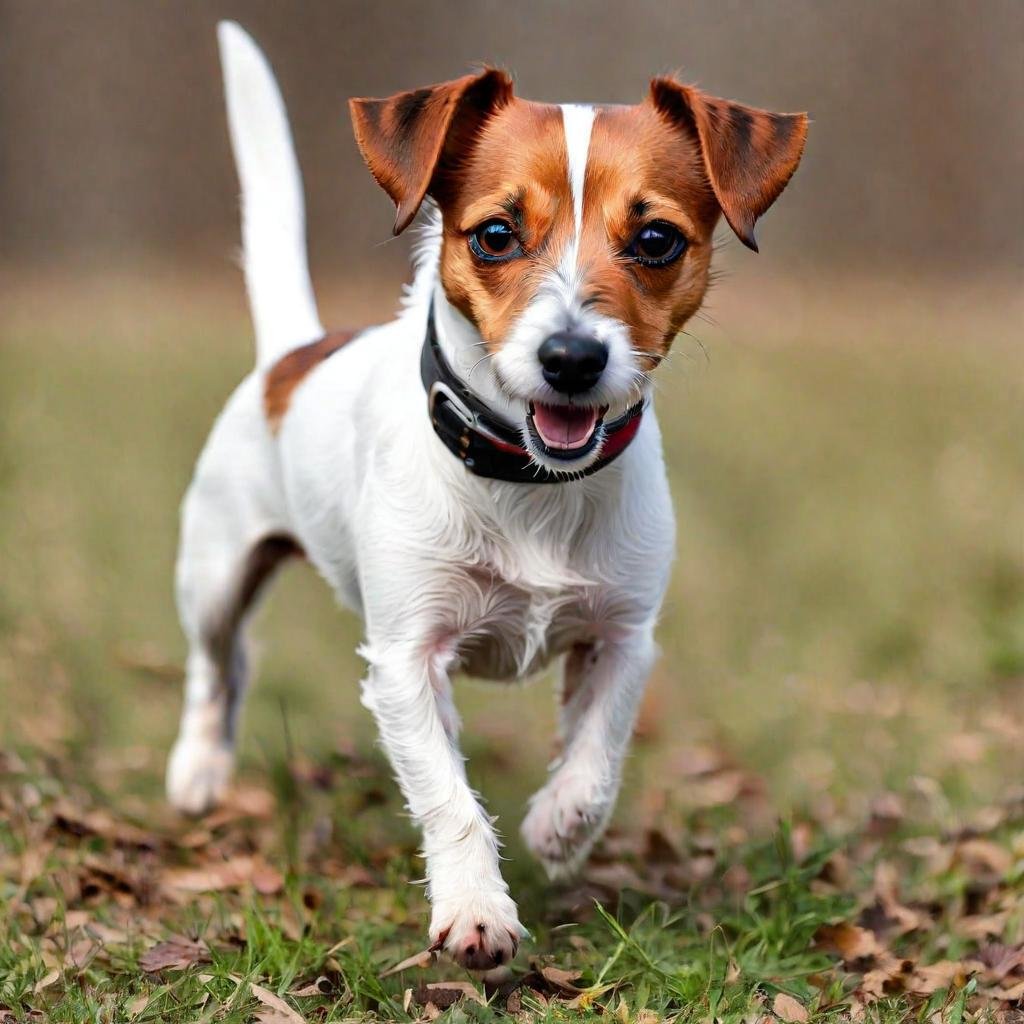
Height
- Male: 10-12 inches (25-30 cm)
- Female: 10-12 inches (25-30 cm)
Weight
- Male: 14-18 pounds (6-8 kg)
- Female: 13-17 pounds (6-7.5 kg)
Color
- Jack Russell Terriers come in predominantly white with black, tan, or brown markings. They may also be tricolored (white with black and tan markings) or have a combination of these colors.
Temperament and Behavior
- Energetic: Jack Russell Terriers are highly energetic and require regular exercise and mental stimulation to prevent boredom.
- Intelligent: They are intelligent dogs with a keen sense of curiosity. Jack Russells excel in activities that challenge their mind and body.
- Bold and Fearless: They have a bold and fearless personality, often displaying confidence and determination.
- Alert: Jack Russells are alert and make excellent watchdogs. They will bark to alert their owners to any potential threats.
- Independent: They have a strong independent streak and may be stubborn at times, which can make training a challenge.
- Affectionate: Despite their independent nature, Jack Russells are affectionate towards their families and enjoy being part of household activities.
Lifespan
- The average lifespan of a Jack Russell Terrier is 13-16 years.
Description and Unique History
Jack Russell Terriers are small, agile dogs with compact bodies and short, dense coats. His body is slightly long and strong compared to his height. The Jack Russell has a square-shaped head, dark almond-shaped eyes and small, V-shaped ears that fold forward.
Unique History: Jack Russell Terriers originated in 19th century England, named for the Reverend John Russell, who developed the breed for fox hunting. They were bred to be courageous and agile enough to lure foxes out of their dens and lead them to hunters.
This breed was prized for its hunting skills, tenacity and stamina. Jack Russells became popular among hunters and farmers because of their ability to work independently and fearlessly in challenging terrain. They were known for their ability to track and hunt small animals, including foxes, rats, and rabbits.
Jack Russell Terriers were recognized by the Kennel Club in England in 1908 and later by the American Kennel Club (AKC). They quickly became popular as companion dogs due to their lively personalities, intelligence, and affectionate nature towards their families.
Today, Jack Russell Terriers are admired for their spirited personalities, intelligence, and agility. They excel in a variety of dog sports and activities, including agility trials, obedience and flyball. Jack Russells are known for their boundless energy and enthusiasm, making them ideal companions for active individuals and families who can provide the exercise and mental stimulation they need.
19. Lhasa Apso :
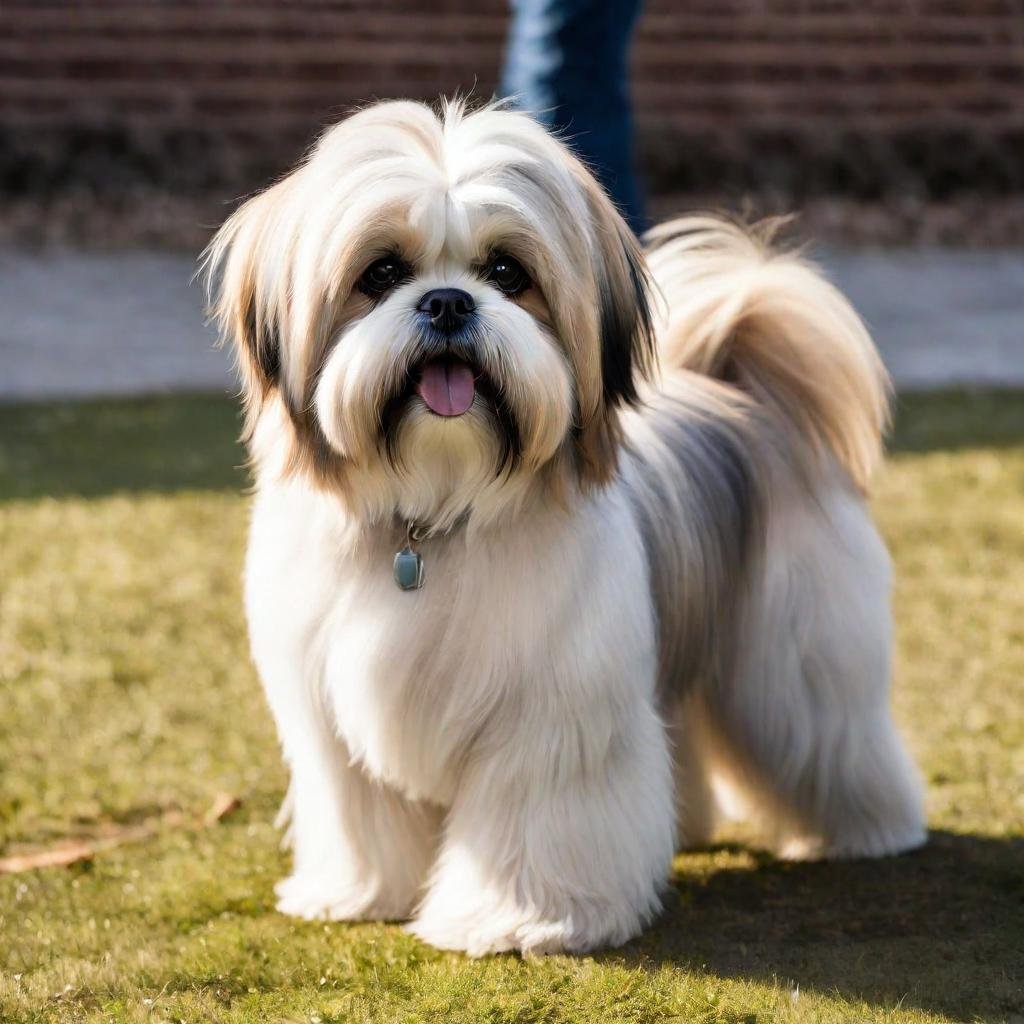
Height
- Male: 10-11 inches (25-28 cm)
- Female: 10-11 inches (25-28 cm)
Weight
- Male: 12-18 pounds (5.5-8 kg)
- Female: 12-18 pounds (5.5-8 kg)
Color
- Lhasa Apsos come in various colors including gold, cream, honey, slate, smoke, black, and white. They may have a black mask or markings.
Temperament and Behavior
- Independent: Lhasa Apsos are known for their independent nature. They can be aloof with strangers and may have a strong sense of loyalty to their family.
- Alert: They make excellent watchdogs and will bark to alert their owners to anything unusual.
- Intelligent: Lhasa Apsos are intelligent dogs and can be quick learners, although they may also display some stubbornness.
- Affectionate: They are affectionate towards their families but may have a dignified demeanor.
- Playful: Lhasa Apsos enjoy playtime and can be quite playful despite their dignified appearance.
- Loyal: They are loyal to their families and may form strong bonds with their owners.
Lifespan
- The average lifespan of a Lhasa Apso is 12-15 years.
Description and Unique History
Lhasa Apsos are small, sturdy dogs with long, flowing coats and a distinctively expressive face. They have a deep chest, a flat back and a well feathered tail that sweeps over their back. Lhasa Apsos have a small head, long muzzle, dark eyes and heavy feathered droopy ears.
Unique History: Lhasa Apsos are ancient dogs that originated in Tibet, where they were bred in monasteries and homes as watchdogs and companions. He was highly valued for his vigilance and ability to alert the monks to intruders.
The breed’s name comes from the Tibetan city of Lhasa, where they were held in high regard. Lhasa Apsos were considered sacred dogs and were not allowed to be sold but rather given as gifts. They were believed to bring good luck and were often used as sentinels in Tibetan monasteries.
Lhasa Apsos were first brought to the West in the early 20th century and quickly gained popularity for their distinctive appearance and loyal temperament. They were recognized by the AKC in 1935 and have since become appreciated as companion dogs and show dogs.
Today, Lhasa Apsos are known for their dignified demeanor, intelligence, and devotion to their families. They require regular care to maintain their luxurious coat, but generally they are adaptable to a variety of living environments. Lhasa Apsos thrive in homes where they receive love, attention, and mental stimulation from their owners.
20. Havanese :
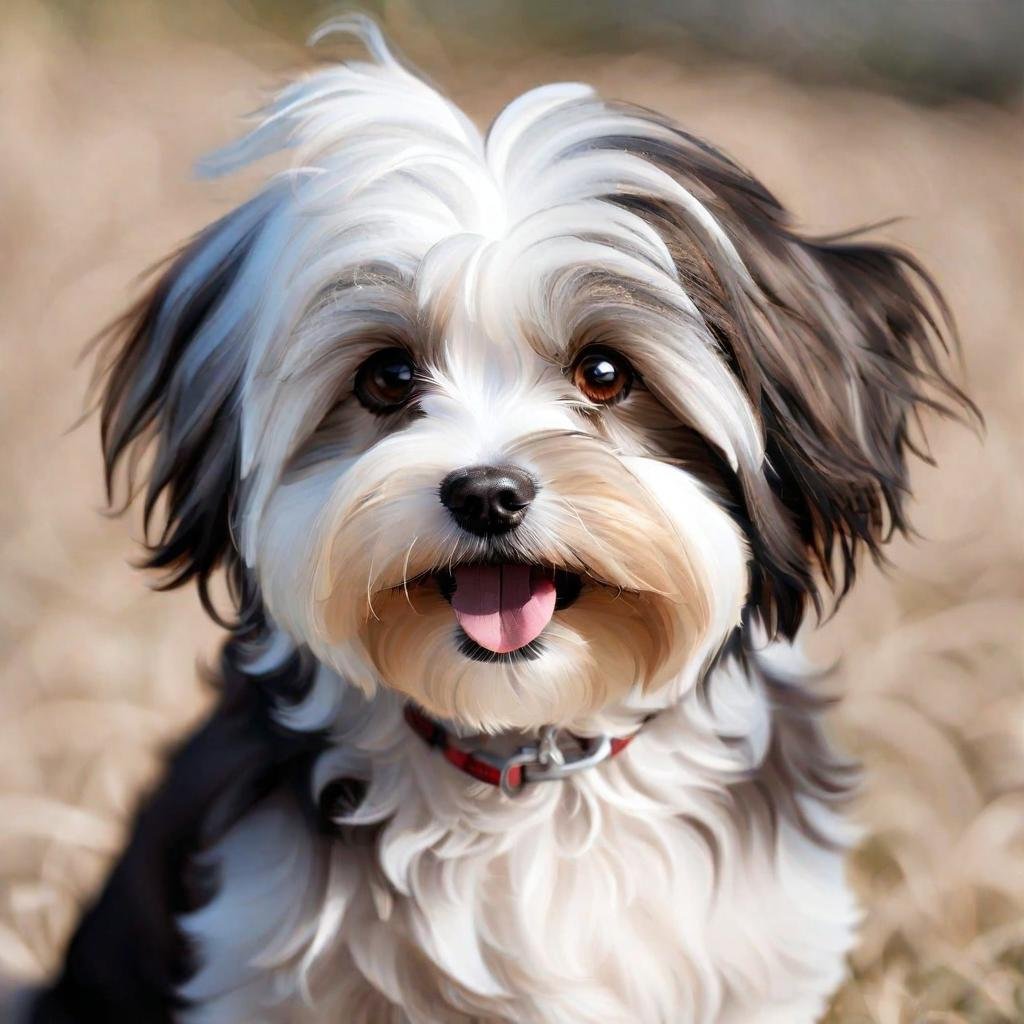
Height
- Male: 8.5-11.5 inches (22-29 cm)
- Female: 8.5-11.5 inches (22-29 cm)
Weight
- Male: 7-13 pounds (3-6 kg)
- Female: 7-13 pounds (3-6 kg)
Color
- Havanese come in a wide range of colors including white, black, cream, red, fawn, chocolate, and blue. They can also have various markings and patterns, making each dog unique.
Temperament and Behavior
- Affectionate: Havanese are known for their loving and affectionate nature. They enjoy being close to their families and often form strong bonds with their owners.
- Friendly: They are generally friendly with strangers and other pets, making them great companions in multi-pet households.
- Intelligent: Havanese are smart and quick learners. They respond well to positive reinforcement training methods.
- Playful: These dogs have a playful and joyful disposition, often enjoying games and activities that involve their families.
- Alert: While not typically yappy, Havanese are alert and will bark to alert their owners to any unusual occurrences.
Lifespan
- The average lifespan of a Havanese is 14-16 years.
Description and Unique History
Havanese are small, sturdy dogs with soft, silky coats that can be straight, wavy, or curly. They have expressive eyes and a lively, friendly expression. Their ears are set high and fall neatly to the sides of their face, and their tail is carried over their back in the form of a feather.
Unique History: The Havanese is the national dog of Cuba, originating from the Bichon family of dogs. They were brought to Cuba by Spanish settlers in the 16th century. These dogs quickly became a favorite among Cuba’s elite and wealthy families, who valued them for their charm and companionship.
The breed almost reached extinction after the Cuban Revolution when many upper-class families fled the country with their beloved dogs. In the 1970s, a group of dedicated breeders in the United States and Europe worked to revive the Havanese from the limited gene pool of dogs taken out of Cuba.
Recognized by the American Kennel Club (AKC) in 1996, the Havanese has since grown in popularity due to its charming personality, adaptability, and hypoallergenic coat. They are now family pets known for their loyalty, intelligence and cheerful behavior. Havanese continue to win hearts around the world, appreciated for their adorable nature and beautiful appearance.
Adoption and Purchase Considerations ;
When considering adopting or purchasing a small to medium dog breed, several unique factors should be taken into account to ensure a successful and gratifying experience.
Adoption Considerations
- Visit the Shelter: Visiting local shelters and rescue organizations can provide opportunities to meet a variety of small to medium dog breeds in need of homes. This may also be a more economical option than buying from a breeder.
- Temperament Assessment: Spending time with a dog to understand its temperament and behavior can help you determine if it is a good fit for your lifestyle and household dynamics.
- Health Evaluation: Many shelters perform health evaluations and vaccinations, making sure the dog is in good health before adoption.
Purchase Considerations
- Reputable breeders: It is important to research and choose reputable breeders who prioritize the health and welfare of their dogs. This helps ensure that the dog comes from a responsible breeding environment.
- Health Guarantee: Reputable breeders often offer a health guarantee and documentation of vaccinations and genetic testing, giving peace of mind regarding the dog’s health.
- Breed-Specific Traits: Understanding breed-specific traits and characteristics can help make an informed decision about whether a particular small to medium breed is a good fit for your home and lifestyle.
Whether adopting or purchasing, taking the time to consider these factors can lead to a rewarding relationship with your new furry companion.
** Conclusion **
In conclusion, small medium dog breeds offer a wonderful blend of companionship and adaptability that can fit well into a variety of lifestyles. Whether you choose to adopt from a shelter or purchase from a reputable breeder, these dogs bring unique joys and thoughts.

Their small size makes them easy to handle and fit into urban environments or small living spaces, while also providing ample love and affection. They often require less food and maintenance than larger breeds, which can be beneficial for people with busy schedules or limited space.
However, it is important to consider their exercise needs, behavioral tendencies, and potential health issues specific to each breed. Proper training, socialization, and regular veterinary care are essential to ensure their well-being and happiness.
Whether you’re attracted to the playful energy of the Jack Russell Terrier or the regal demeanor of the Lhasa Apso, each small to medium dog breed offers its own unique personality and characteristics. By understanding their qualities and needs, you can have a loving and satisfying relationship with your beloved companion for many years to come. Adopting or purchasing a small to medium breed dog is not just adding a pet to your family but welcoming a loyal and devoted friend into your life.
You might be interested in reading this post as well Medium small dog breeds
**Paw-some Companions: Discovering the Charm of Small to Medium Dog Breeds** ** Introduction ** When it comes to finding the ideal four-legged friend, small to medium breed dogs often prove to be fantastic companions. These breeds strike a pleasant balance between manageability and strong character, making them ideal for a variety of living situations, from…
You can read this post https://tomeshnews.co.in/medium-large-dog-breeds/
Are small to medium dog breeds suitable for families with children?

Yes, many small to medium breeds are great with children when properly socialized and supervised.
Are small to medium dog breeds suitable for apartment living?

Yes, they can adapt well to apartment living with regular exercise and mental stimulation
How do I choose the right small to medium dog breed for my lifestyle?
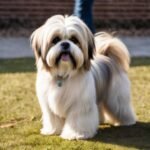
Consider energy level, grooming needs, temperament, and size compatibility with your living space.
Are small to medium dog breeds good with other pets?
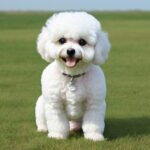
Many are, especially with proper socialization from a young age.
Do small to medium dog breeds require special grooming?
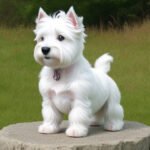
Yes, grooming needs vary, but regular brushing and occasional grooming sessions are usually necessary.

